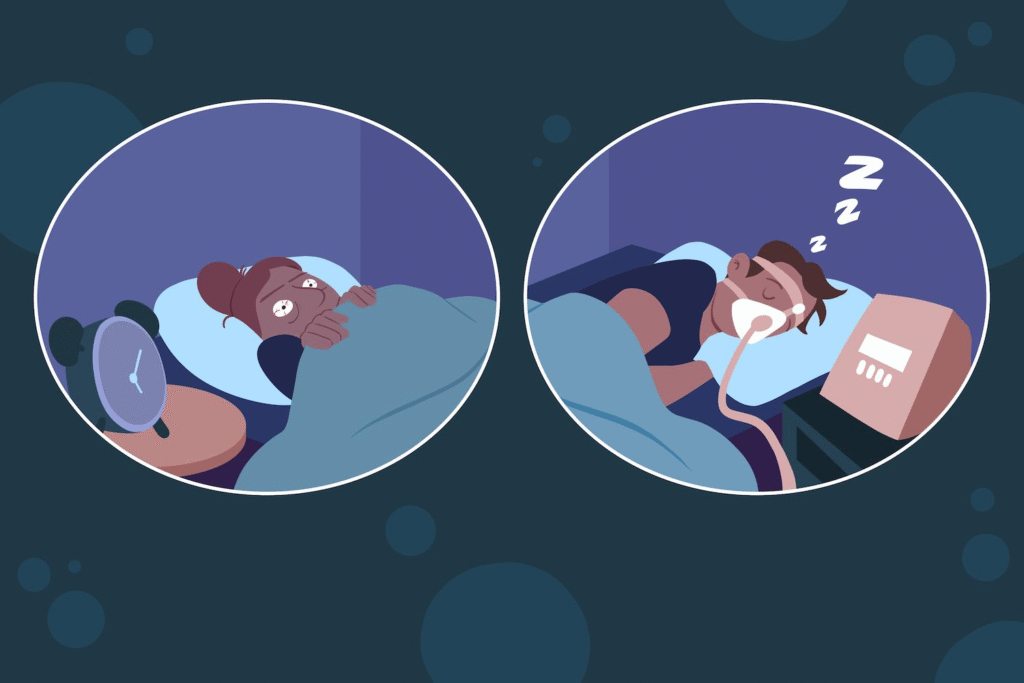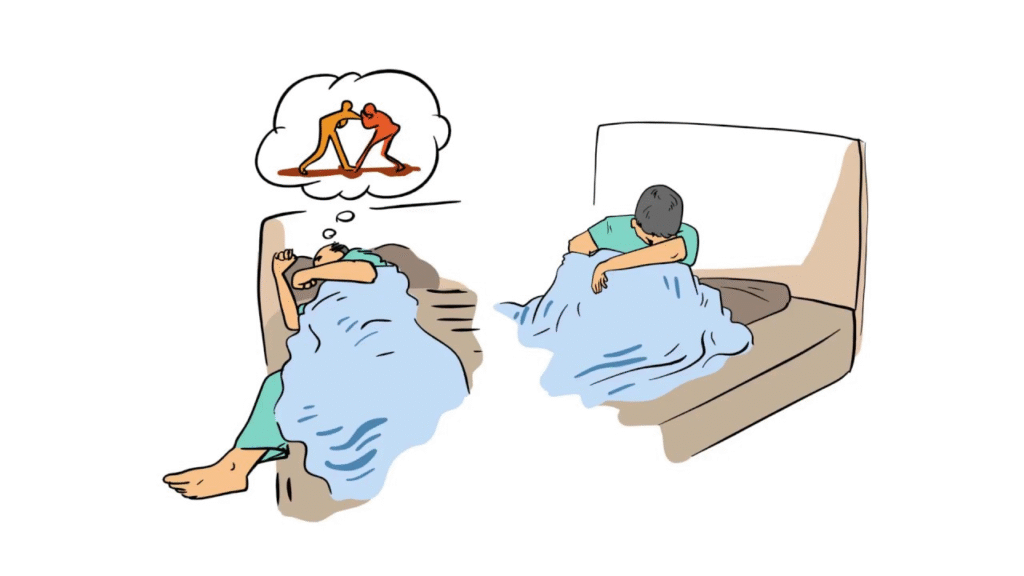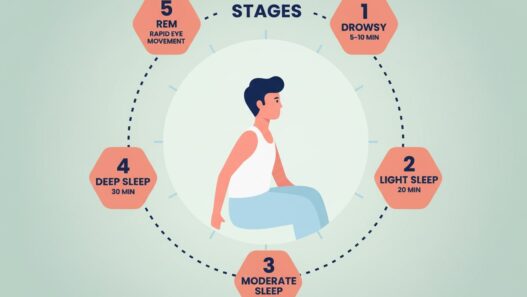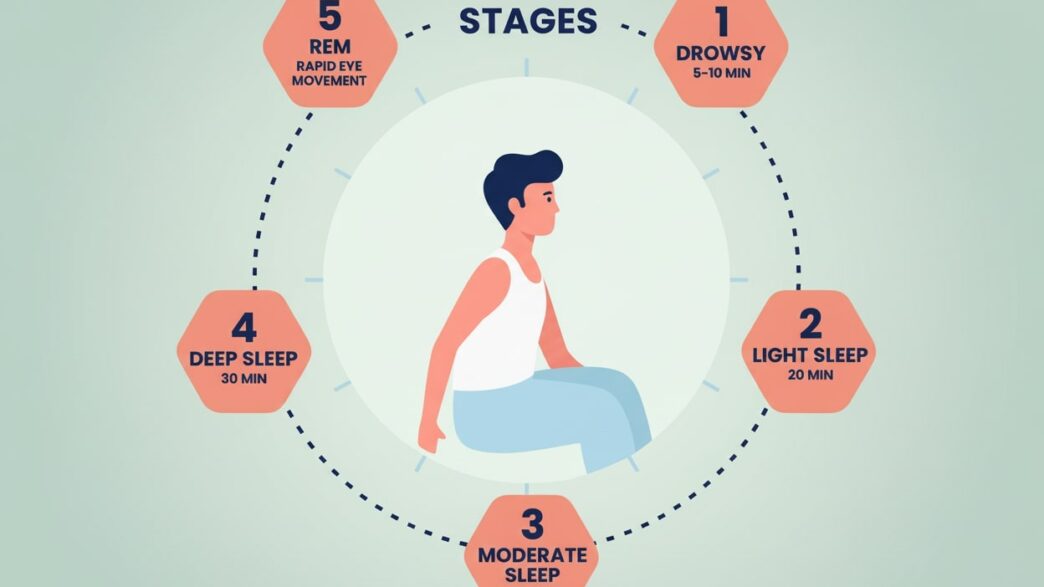Sleep is often considered as a simple act of closing your eyes and just going into an unconscious state, but it is a highly organized biological state.
Our body and brain cells continue through distinct sleep stages, each with unique functions that restore energy, repair tissues, and strengthen memory. Understanding these stages can help us to improve sleep quality and overall health.
Why Sleep Stages Matter
According to the Carskadon and Dement study in 2017, sleep is a cycle that lasts on average 90 to 120 minutes. An adult completes approximately 4 to 6 cycles per night. The distribution of sleep of an adult normally comprises 4 stages. Each stage of sleep plays typical role in
- Physical Recovery – muscle tissue, immune system support
- Mental Health – mood regulation, emotional balance
- Cognitive Function – learning, problem solving, memory consolidation
Stages of Sleep
Sleep is typically divided into two main categories that are Non-Rapid Eye Moment (NERM) and Rapid Eye Moment (REM) sleep. NERM sleep is further divided into three stages Stage 1 (N1), Stage 2 (N2), and Stage 3 (N3). These four stages combine to make a complete sleep cycle.

Stage 1 (NERM-N1) – Transition into Sleep
It is a gateway between wakefulness and true sleep. Stage 1 lasts for 1 to 7 minutes and approx. 2 to 5% of total sleep.
- Brain Waves – The brain transitions from alpha waves, relaxed wakefulness, to slower theta waves.
- Physiology – The muscle tone decreased, eyes rolled slowly beneath the lid, heart rate and breathing began to decline. Many individuals face hypnic jerks which can wake them awake.
- Neurochemistry – Stage 1 is marked by decreased norepinephrine and serotonin output as an inhibitory neurotransmitter and beginning of GABAergic inhibition, dampening arousal system in the brainstem.
- Function – Serves as a gateway to deeper sleep stages. It allows the nervous system to transition from conscious sensory input to internal regulation.
- Disorders – Insomnia, Sleep apnea

Stage 2 (NERM-N2) – Light but Stable Sleep
This stage is considered a more consolidated form of sleep. Its duration is 10 to 25 minutes in the first duration and approx. 40 to 45% of the sleep cycle.
- Brain Waves – Theta indicators dominate with distinct EEG markers that are sleep spindles and K complexes. Sleep spindles originate in thalamus, are thought to inhibit sensory input and protect from being easily awakened. K complexes are large waveforms that serve to suppress cortical arousal and help to maintain sleep continuity.
- Physiology – Body temperature decreases, heart rates slow further, and breathing becomes more regular. The body muscles relax more, and the movement of eyes stops.
- Neurochemistry – GABA continues to inhibit arousal centers. Thalamic gating of sensory input strengthens that reduces response to outside noises.
- Function – It causes memory consolidation especially motor and skill learning. It acts as a buffer between light and deep sleep and promotes synaptic plasticity.
- Disorders – Schizophrenia, Cognitive decline

Stage 3 (NERM-N3) – Slow Wave Sleep
This stage is also called deep sleep. It is the most restorative stage of NERM. Its duration is 20 to 40 minutes early in the night and is less in later cycles.
- Brain waves – It is dominated by delta waves on EEG with high amplitude, low frequency oscillation. This stage is more prominent in the early stage of night.
- Physiology – this stage is associated with the lowest stage of heart health, blood pressure and respiratory rate. Growth hormone secretion peaks, supporting tissue repairs, muscle growth and immune system functioning.
- Neurochemistry – It is characterized by high levels of GABA mediated inhibition, coupled with low levels of acetylcholine, norepinephrine, and serotonin.
- Functions – it is essential for declarative memory consolidation, physical recovery and metabolic regulation.
- Disorders – Sleep walking, Night terrors, Bed wetting

REM Sleep – Dreaming and Cognitive Integration
It is unique in terms of deep sleep and wakefulness. Its duration is 10 minutes in the first cycle, that extends up to 60 minutes in later cycles that is approx. 20 to 25% of total sleep.
- Brain waves – EEG recording resembles low voltage, mixed frequency activity, including beta-like waves.
- Physiology – eyes show rapid movement, heart rate and breathing become irregular, and core muscle face atonia, controlled by brainstem to prevent acting out dreams. It also increases brain metabolism.
- Neurochemistry – high acetylcholine activity, suppressed serotonin and norepinephrine and dopamine activity may contribute to vivid dream experience.
- Function – Emotional regulation by processing stressful and traumatic experiences. Procedural and emotional memory consolidation. Creativity and problem solving.
- Disorders – PTSD, Depression, Narcolepsy, RBD

Final Thoughts
Sleep is not any lavishness but it’s a structured neurological process that is vital for life. By protecting and enhancing the sleep stages, one can create repair regulation and integration and protect and enhance sleep quality.

















